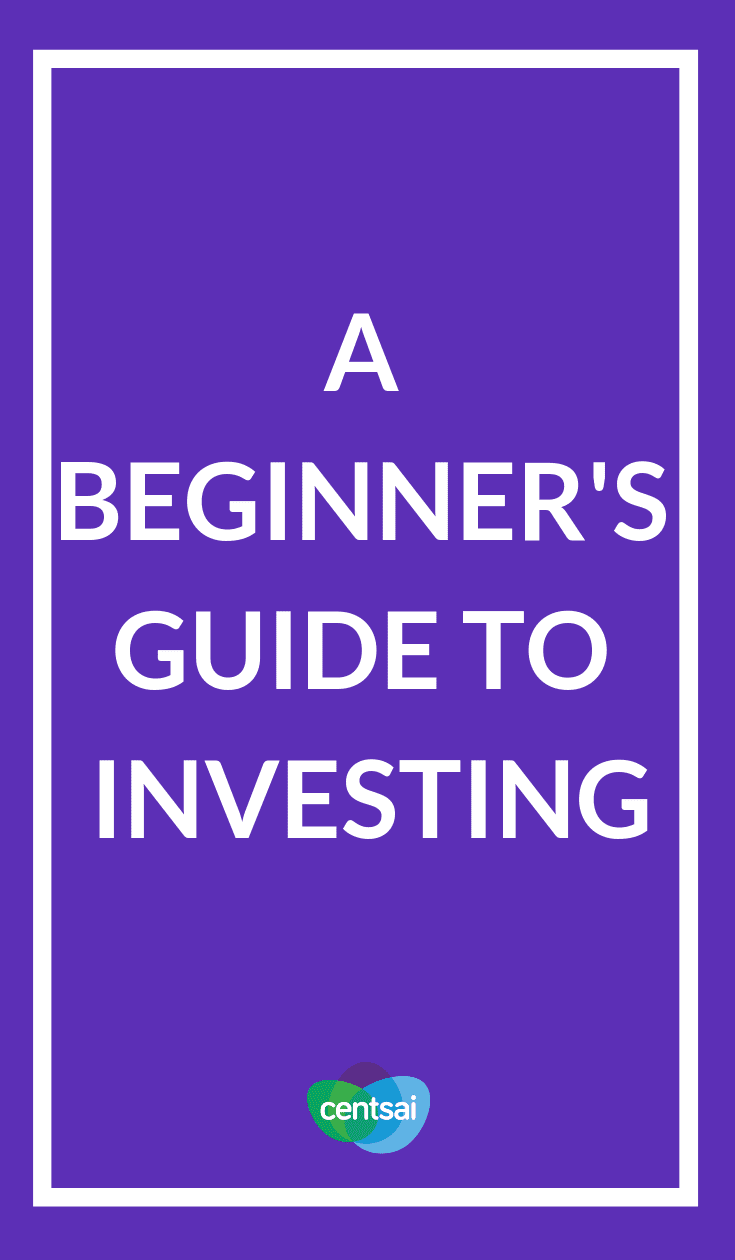
I've been in your shoes. I had some cash and wanted to start investing but was not sure what to do with it. So how did I start investing?
At first, I worked with a couple of financial advisers. I quickly became interested in investing and couldn’t stop reading and researching. Once I learned the basic terminology and fundamentals, I realized investing can be fairly simple and straightforward.
Invest time up front to learn. “An investment in knowledge pays the best interest,” as Benjamin Franklin said. Besides, who do I trust with my money more than myself? Nobody will care more about my personal finances than I do. I wanted to be the one responsible and accountable for my financial well-being.
When it comes to investing, there is no secret formula. Few strike it rich overnight. Home runs are rare. If it sounds too good to be true, it probably is. Investing is a process that required patience and discipline. The best way to learn how to invest is through hands-on experience. Practice makes perfect.
What Is Investing, Anyway?
 Investing is the process of buying an asset with the intention of receiving a return. The return on the investment can be realized through appreciation and income. Appreciation occurs when an asset increases in value.
Investing is the process of buying an asset with the intention of receiving a return. The return on the investment can be realized through appreciation and income. Appreciation occurs when an asset increases in value.
Meanwhile, income is when an asset pays interest, dividends, or some other type of payment. Selling an asset at a price higher than the purchase price is a capital gain. Before purchasing an asset, an investor should consider both potential for appreciation and income.
Why Should You Invest?
The answer is simple: The purpose of investing is to build wealth. We have a limited amount of time each day and can work only a finite number of hours. Our earning potential is related to our time. On the other hand, investments will generate a return while we are sleeping. Put our money to work for us. A key to building wealth is creating multiple streams of income.
Owning a variety of investments while working presents us with the best opportunity to obtain wealth.
Before investing, we should determine specific goals. Why are we investing? What are we investing for? When do we need the money? How much money do we need? Once you've defined your goals, you should address each specific one in a financial plan. Every individual has a unique financial situation. Although investing is not one-size-fits-all, every financial plan should have key components.
Investing for retirement, to buy a house, for education, for a vacation home, and for a wedding are all possible financial goals. Yours may be different. Notice some are short-term, like planning for a wedding, and others are long-term, like retiring. Time horizon is a major factor to consider when investing.
How to Determine Your Investing Strategy
We use different types of accounts for different goals. If you're an employee investing for retirement, a 401(k) may be your best option. But if you're self-employed, you might want to invest in an IRA or a Roth IRA. If you are investing for a child’s education, consider a 529 plan. If you need your money before retirement, a brokerage account is the right choice.
We should strive to set money aside for the short, intermediate, and long term. This is known as the bucket strategy. Money we need within a year should be invested conservatively. We can afford to be more aggressive for the intermediate and long term. The longer the time period, the more risk we can take.
Another factor to consider while investing is age. Investors in their 20s should be more aggressive than investors near or in retirement. Younger investors have time to recoup potential losses.
The sooner you start investing, the better. Time in the market is extremely important to investment growth. Time is on our side and works in our favor.
Investors should determine their risk tolerance or risk appetite. How much risk are you willing to take? Can you stomach losing some money in the short term? Can you handle volatility, the swings in the economy and stock market?
This is known as risk versus reward. The greater the risk, the greater the reward and vice versa. At times, the stock market can resemble a roller coaster, but there is no doubt it has steadily increased over time. Just look at a historical chart.
Taking Care of Short-Term Needs
Before investing, we should ensure we have sufficient cash saved for our short-term needs and for an emergency. An emergency fund should contain enough money to cover six to 12 months of living expenses. What if we lose a job? What if we have a medical emergency?
I tend to be conservative and err on the side of caution. Liquidity is important. We should have enough cash for comfort. Once again, it is an individualized approach. Short-term savings should be kept in an interest-bearing savings account, money market, or certificate of deposit (CD).
Once we've saved enough cash for short-term needs and emergencies, we should immediately begin investing.
Numbers do not lie. Historically, the return on cash is less than other assets like stocks and bonds.
Choose Your Investments Wisely
Investment selection is a major element of financial planning. Stocks, bonds, cash, mutual funds, exchange-traded funds (ETFs), real estate, and commodities are common investment options.
Mutual funds are securities composed of stocks and bonds. For example, one mutual fund may own hundreds of stocks, hundreds of bonds, or a combination of both. There are also real estate mutual funds.
ETFs are similar to mutual funds but with some differences. The major asset classes that most individual investors have access to and include in their portfolios are stocks, bonds, cash, and real estate.
Mutual funds can be actively or passively managed. Actively managed funds are run by individual fund managers. Passive funds are sometimes called index funds. These funds track a benchmark such as the S&P 500. In my opinion, buying a passive index fund like the S&P 500 is an ideal place to start investing to get your feet wet.
Asset Allocation and Diversification
Diversification and asset allocation are two factors to consider while constructing a portfolio. Asset allocation is the method in which we divide resources in a portfolio. For example, a $10,000 portfolio with 50 percent stocks and 50 percent bonds would own $5,000 in stocks and $5,000 in bonds. We should allocate portfolios should based on risk assessment.
Select Own Investments With Automated Portfolio Management
Diversification means owning a wide range of investments, which helps mitigate risk. Don't put all of your eggs in one basket. Selecting noncorrelated investments, ones that do not move in the same direction, hedges against potential losses.
Over time, as investments gain or lose value, asset allocation will drift. It's important to rebalance your portfolio periodically (annually) to ensure your asset allocation is accurate.
As discussed, diversification is a fundamental investing concept. For instance, owning only one S&P 500 stock is risky. On the other hand, owning all 500 S&P 500 stocks helps limit risk. If a handful of stocks are lousy performers, there are many others to boost performance. Owning only one stock is known as “single stock risk.”
Extending the concept, owning just stocks in a portfolio is not diversification. Investors should own assets in different classes. Different classes of assets aren't directly correlated and thus don't move in unison. For instance, when stocks are increasing, bonds do not perform as well. On the other hand, when stocks are decreasing, bonds tend to increase. Owning multiple assets in multiple classes helps to smooth returns. Stay diversified.
Select a mix of investments most likely to meet your goal. Investors should create a systematic plan to buy assets over time.
Dollar cost averaging is a strategy that involves consistently and regularly purchasing an asset over a period. Dollar cost averaging eliminates some risk and limits volatility. The strategy encourages discipline and removes emotion.
The Magic of Interest
When it comes to investing, every little bit adds up. Every dollar you save and invest is one dollar closer you are to financial freedom. Compound interest is interest earned on principal and accumulated interest.
“Compound interest is the eighth wonder of the world. He who understands it, earns it … he who doesn’t … pays it,” Albert Einstein once said.
Compounding is similar to the snowball effect. It’s a powerful force and legitimate reason to reinvest interest, dividends, and capital gains.
Investment Taxes and Fees
While investing, it’s important to consider taxes. Different accounts are taxed differently. For example, etirement accounts like a 401(k) and an individual retirement account (IRA) are pretax. Brokerage accounts are after tax. You should place careful consideration and attention on which investments are in each type of account. Strive for tax efficiency.
You also want to keep fees and costs as low as possible. Financial advisers charge annual fees. In addition, be aware of trading fees and mutual fund expense ratios. As Benjamin Franklin said, “Beware of little expenses. A small leak will sink a great ship.”
Final Thoughts on How to Invest
We can't control the stock market or the economy, and we can't time the market. Let’s control the variables we can control. Create a plan. Stick to it. Be patient. Have discipline. Let time handle the rest.
Don't wait any longer. You are losing valuable time and money. Get started now. Enjoy the journey, and watch the magic happen.










